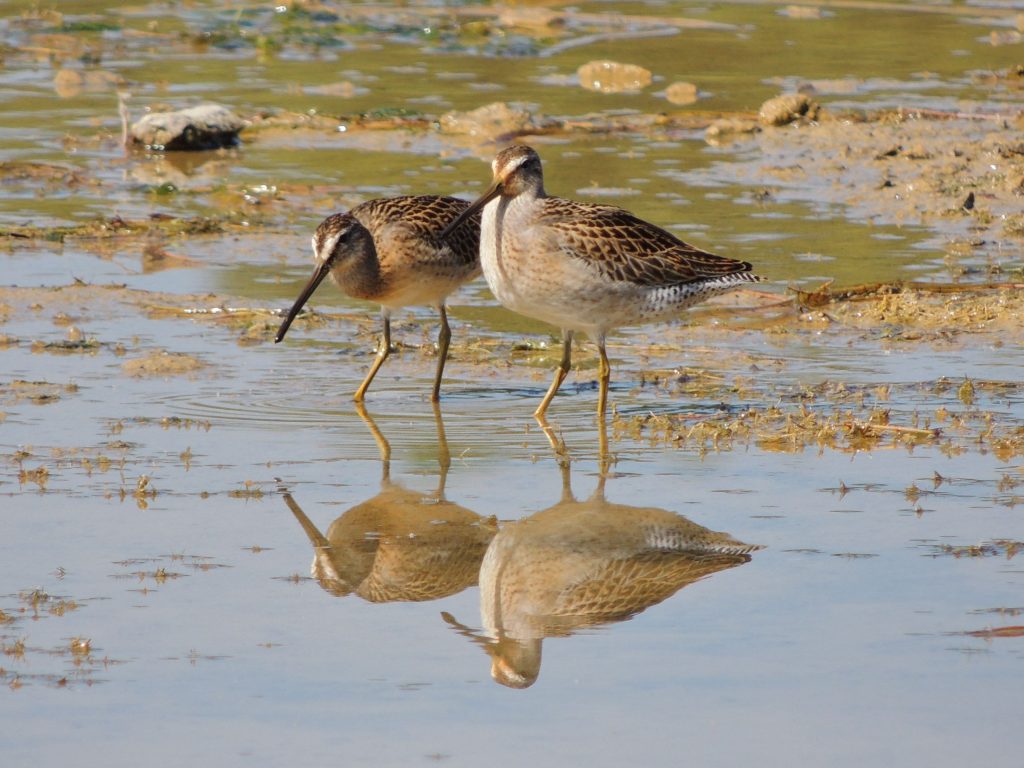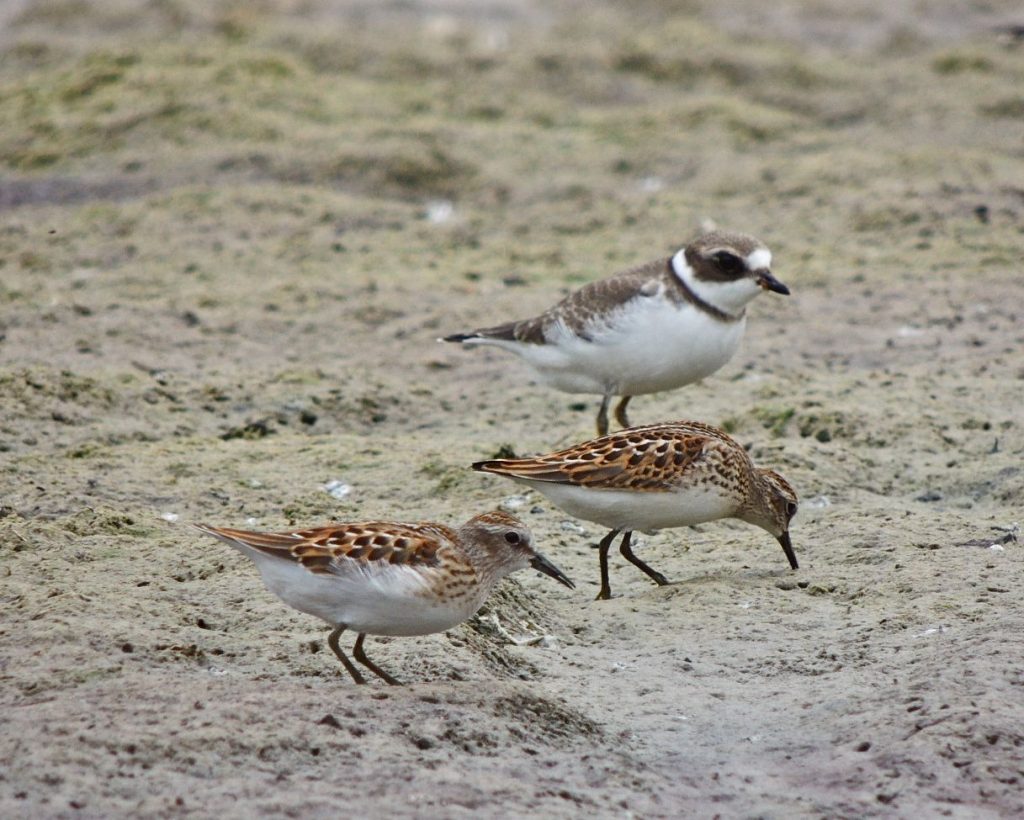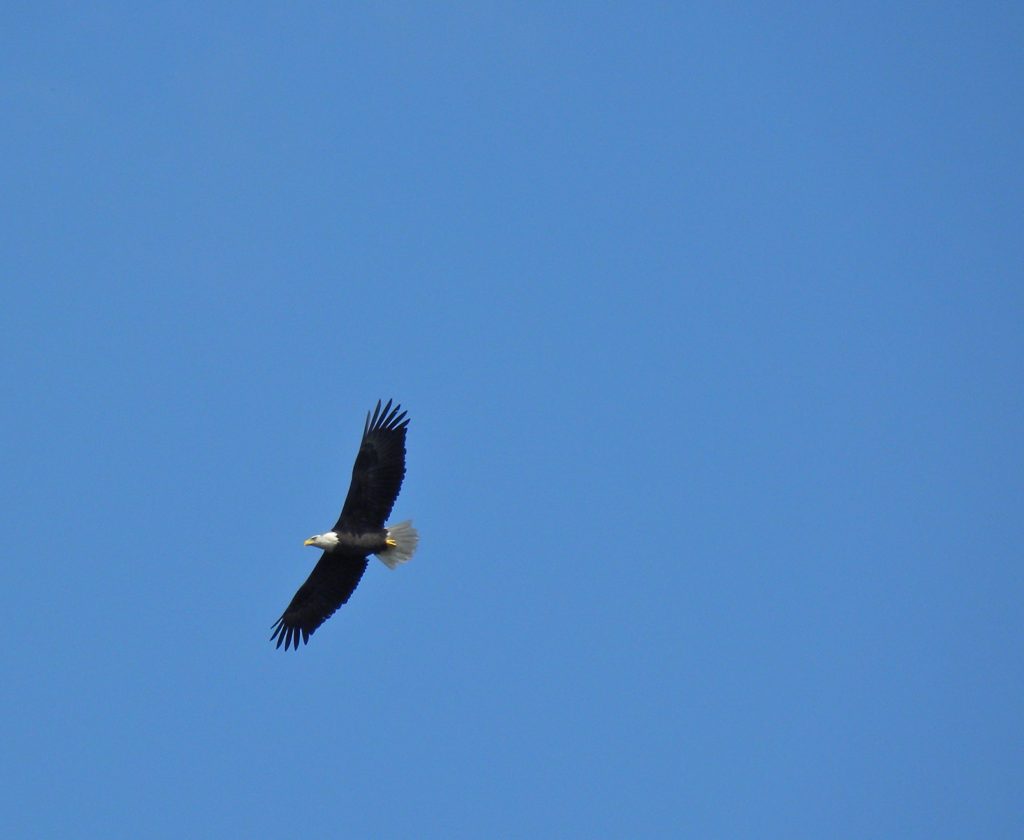August 20 2017. Townsend, ON. It’s a longish story but by way of a website that links visiting birders with locals willing to share, I spent the day showing a young British birder and his fiancé Andrea, around one of this season’s best birding places. This is Andrew’s first time across the Atlantic so for him the volume was at the sensational level; by breakfast he’d thrilled at the sight of our robins, goldfinches and nuthatches. I know how he felt, it takes a few days for the waves of first impressions and novelty to move aside and allow for a more measured assessment.

Our first and longest stop was at a large expanse of mudflats, actually a sewage settlement lagoon that was dotted with hundreds of hungrily feeding shorebirds. Andrew was almost delirious at the abundance and variety of lifer birds, mostly confusing sandpiper species: Least, Semipalmated, Pectoral, Solitary and Stilt Sandpipers mixed in with slightly less puzzling Killdeer, Semipalmated Plovers, Greater and Lesser Yellowlegs and Short-billed Dowitchers. Every sweep of the binoculars turned up something new for him, something that leapt to life which, until that moment, had been just remembered photos in magazines, books or field guides; I’m certain he could have stayed all day, Andea was very patient.

Our first sighting here (really our very first!) was a young Peregrine Falcon found hunched along a shoreline watching over these hundreds of meal tickets. My companion was a touch blasé about the peregrine, I wasn’t though. I’ve seen and watched many peregrines over the years but can never quite get over their clean and powerful elegance. To see a peregrine zip past on easy wing flicks is really spine tingling; but then to witness today’s bird joined by another and take flight to scatter the shorebirds into a panicked mass-escape, to see them separate one as their quarry and chase it hard in wide sweeps and staggering climbs was a lifetime spectacle, a bit like those wildlife wolf-and-caribou or lion-and-zebra hunts that usually end badly for the hunted.
In this chase the (probable) Pectoral Sandpiper eventually got away, leading the hunters in zigs and zags and finally outrunning them. Most shorebirds, even if they’re tasty, are fast and efficient long distance fliers. Peregrines do better stalking from above and killing by diving and clobbering their prey; with their selected sandpiper and chasing it on the flat or on uphill turns they were evenly matched.
We were enjoying a privileged birding spectacle, just us and all these shorebirds! A spectacle that in the U.K would have attracted many dozens of birders and a collective fortune in optical equipment. I was thrilled to pick out a slightly different-looking bird that turned out to be a Stilt Sandpiper, perhaps the only one among the many look-alikes. I can barely remember the last time I knowingly saw a Stilt Sandpiper and studying it today was a lesson that will stay with me. Next time I should have no trouble picking one out in a crowd.
When I convinced Andrew to turn away from inhaling shorebirds he added a Wilson’s Snipe, Bufflehead, Purple Martin, Bobolink, American Widgeon and a magnificent adult-plumaged Bald Eagle to his head-spinning day’s list.

Despite the novelty of so many shorebirds the peregrine was the most breathtaking episode, and it was just the start of a very full day.As we left the lagoons he asked if there was a chance we might see a Green Heron, I said, ‘Maybe”.